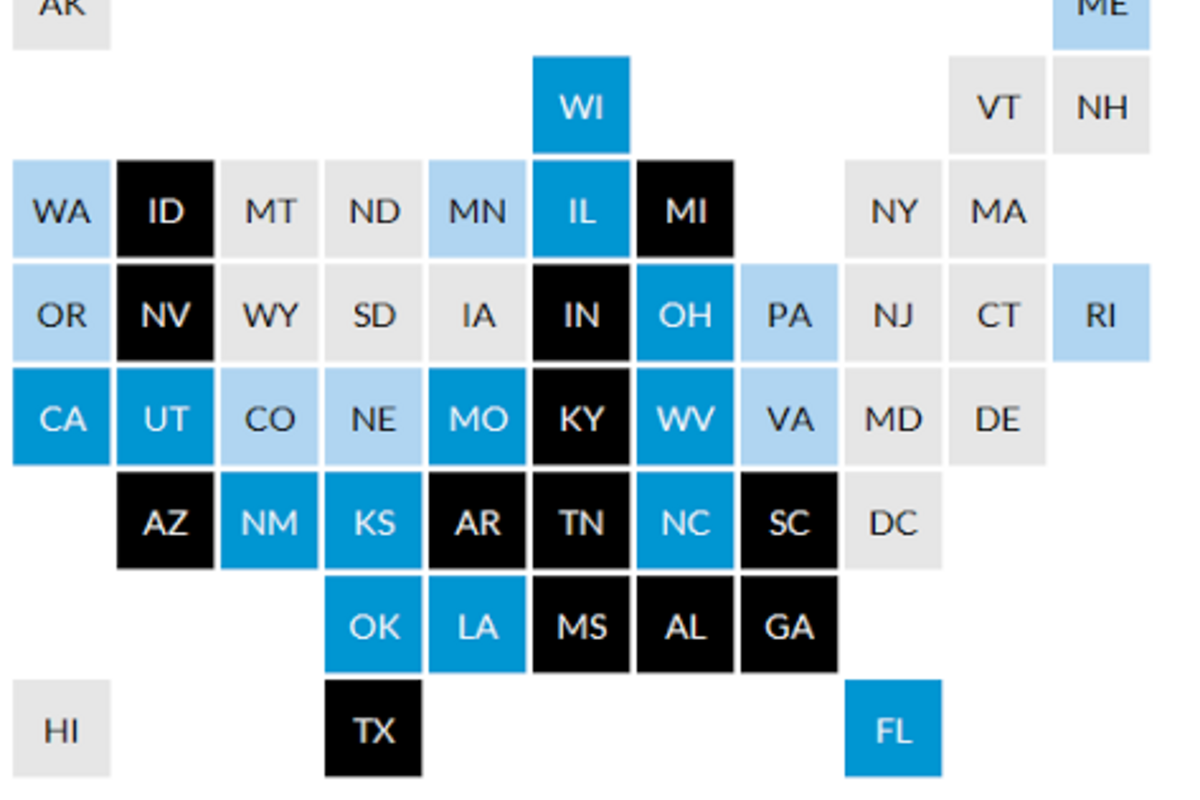Is your state’s tax system punching above or below its weight?
Loading...
When debating tax changes, politicians, advocates, and journalists often use rankings to argue whether they reside in a high- or low-tax state. Possibly the most- cited measure is per capita revenue—how much a state raises per resident—because it allows for 50-state comparisons.
But revenues are determined by more than policy decisions. A state’s geography, demographics, and economic mix all affect tax collections. Knowing how much a state could raise, taking these factors into account, can help us understand whether a state is relying too much or too little on specific taxes as well as overall taxes, relative to a national average. In a new report, my coauthors and I calculated just that, called revenue capacity. We also calculated what states would spend if they followed national averages, given their demographics and economies, called expenditure need. Finally, we measured the difference between the two measures, called fiscal gap at capacity.
To calculate revenue capacity, we established a revenue base (what could be taxed) for every tax and fee in each state and then applied a national average tax rate to that base. The national average rate divided national collections by national revenue base from that source.
As a group, most states collected revenue in line with their capacity, but several states deviated from this trend. Mississippi is a telling example. In 2012, its per capita total revenue was $5,308, the tenth lowest total of any state. However, its per capita total revenue capacity was $4,776, the lowest of any state. In other words, Mississippi actually collected more revenue than it would have using a national average tax system. While you might not think of Mississippi as a high-tax state, its tax system outstripped its economy and demographics. New York, Rhode Island, and West Virginia also had actual revenue collections far exceed their capacity.
On the flip side, there is Massachusetts, ridiculed for years as Taxachusetts. The state’s per capita revenue was $7,647 in 2012, the eighth highest total among the states, but its per capita revenue capacity was $8,472, the fifth highest. Its state and local tax systems raised less than they could have, given economy and demographics. Connecticut, New Hampshire, and Tennessee also had per capita revenue significantly below capacity.
Our report also compares capacity and revenue for specific taxes. These comparisons show which states over and under use each specific tax relative to the national average.
Of course, government spending also affects decisions on revenue. For more on that side of the ledger, see my coauthor John Iselin’s post on Urban Wire about spending and expenditure need.
Our calculations of a state’s revenue capacity and expenditure needs are not intended as optimal levels, but rather benchmarks against which policymakers, journalists, and voters can assess state and local finances. They are a way for state and local policymakers to better understand whether their tax systems are making the best use of economic resources.
But state and local governments don’t solve fiscal problems alone. In theory, gaps between tax capacity and spending need could be offset by federal grants or grants from the state to local governments. But in 2012, 26 states had fiscal gaps at capacity even after we added federal grants to the state’s capacity. Furthermore, the same states often struggle with both a limited ability to raise revenue and a high need for spending. In 2012, states with particularly large fiscal gaps at capacity included Alabama, Arizona, Arkansas, Georgia, Idaho, Kentucky, Mississippi, Nevada, and South Carolina. Addressing these gaps ought to feature prominently in federal formulas for grants.
The report goes into great detail on each tax and spending category, providing a comprehensive examination of what drives state and local finance. Politicians, advocates, and journalists, focused on each level of government, should take the opportunity to learn about the underlying complexity of taxing and spending before relying on simpler rankings.
This article first appeared at TaxVox.







